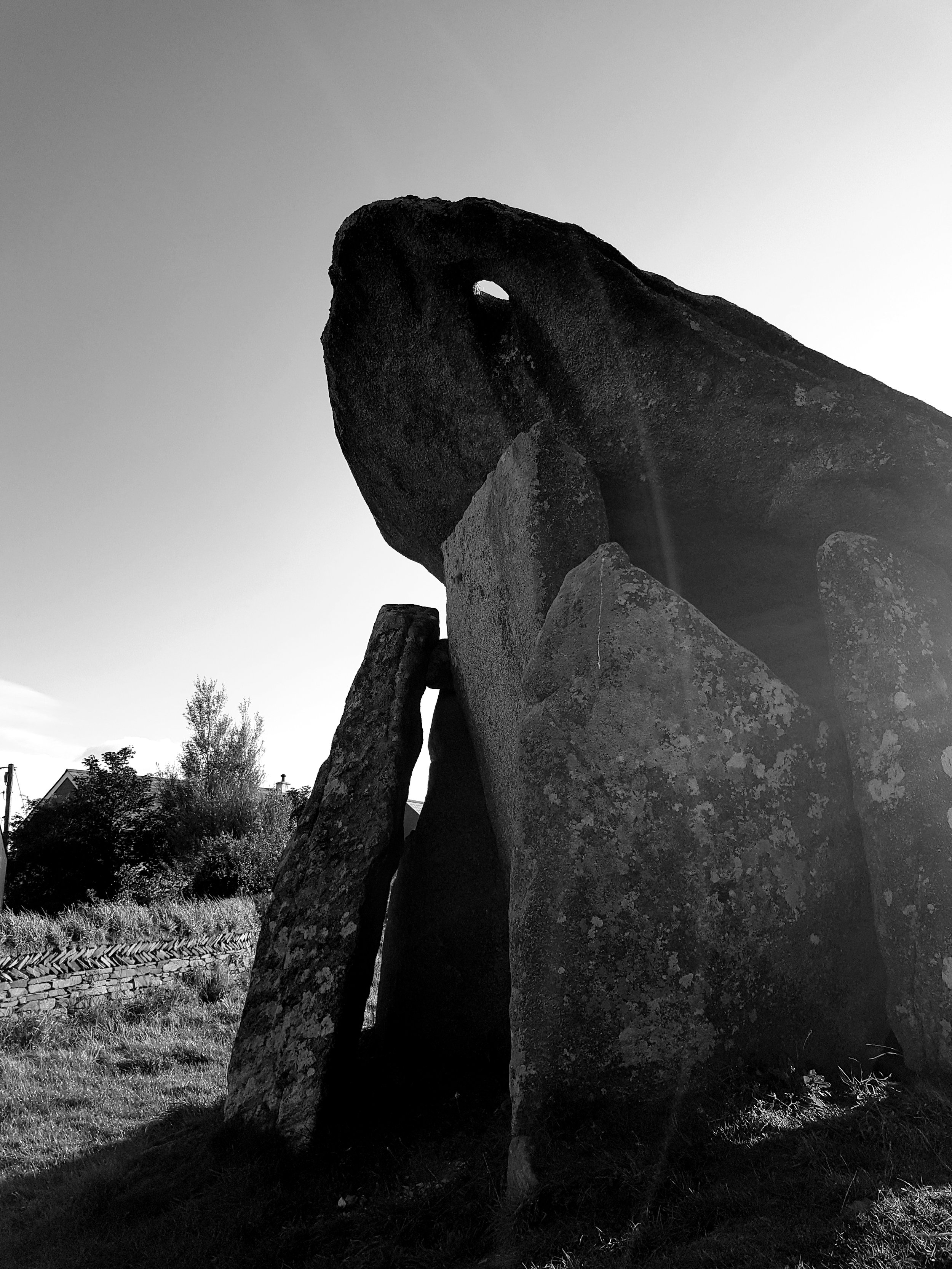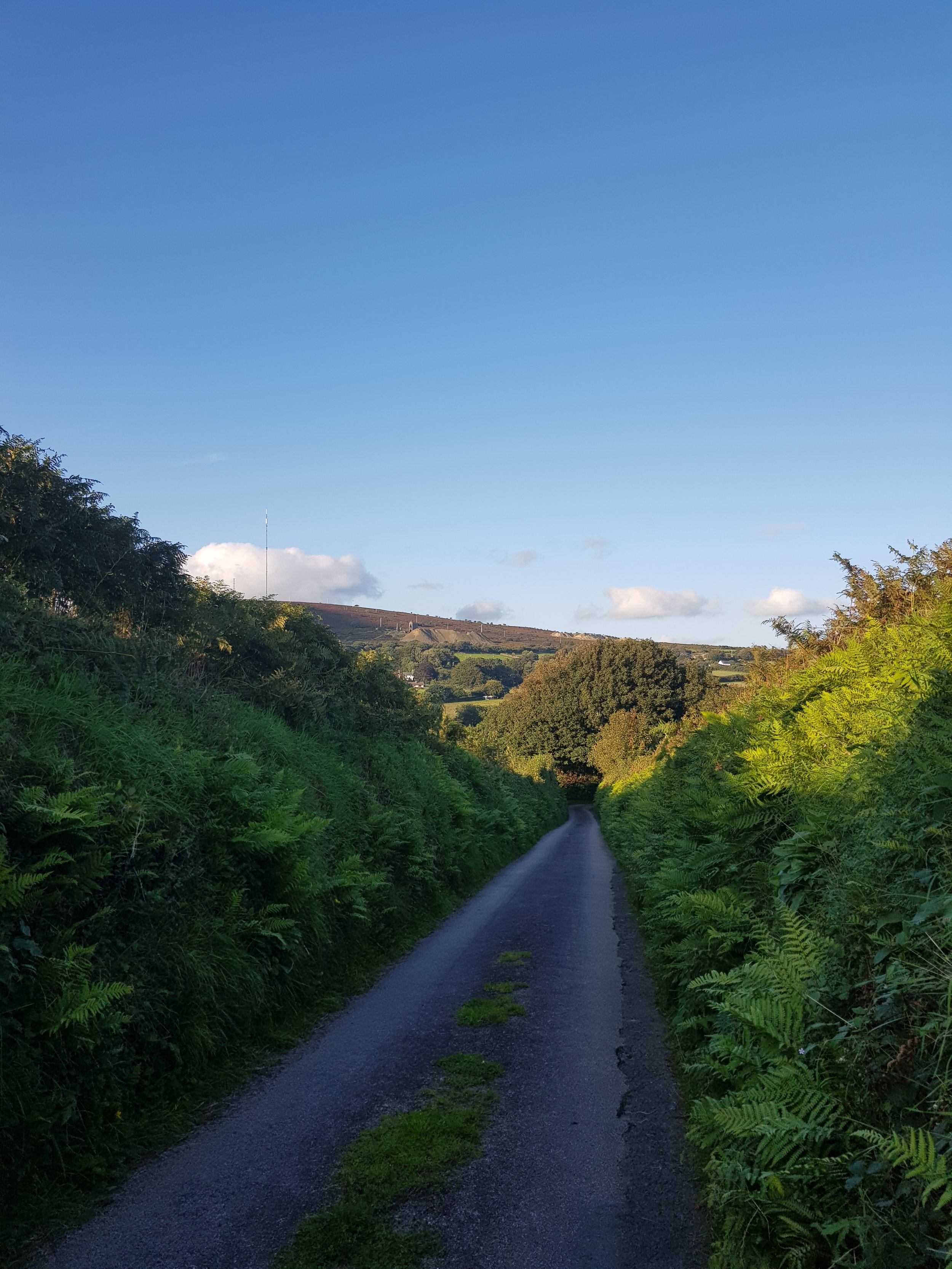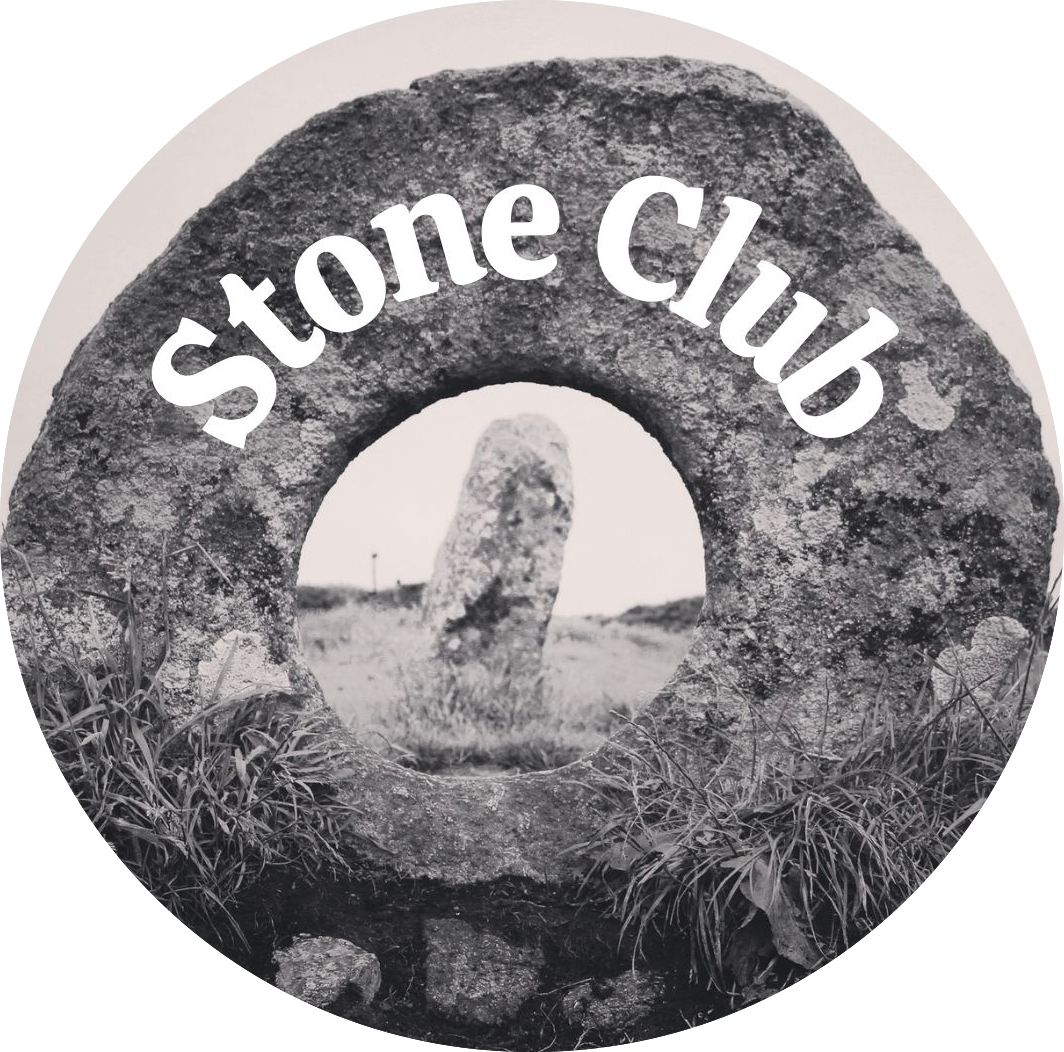Katie A (Member no: 1776)
Trethevy Quoit
It's moving to see a grave and a monument for those who have died in such a high, prominent spot. Here, the quoit is surrounded by the vastness of the land and sky around it
In the land of giants: Trethevy Quoit, a Neolithic dolmen burial chamber in Cornwall
Visited August 2023, written September 2023.
Trethevy Quoit is unassuming on my OS map (a copy printed in 2005, picked up for 20p at a jumble sale). It’s marked with a red English Heritage symbol and its name appears in an olde-style typeface to conjure a sense of age, ancient-ness, the past. Later I think about just how old this monument is, and how it’s been here for around 5000 years (which seems to help with some of my own recent existential moments about turning 34 and becoming a year older).
Before visiting, in eagerness, I look at photos of the quoit on Google Maps. Boxed into my phone screen and the grid view of a photo gallery, it looks small, unmighty, sort of ordinary. In person, it is anything but those things.
I think about how the first people to encounter these stones would not have had this kind of 'preview'. Instead, they may have been involved in building the monument, or witnessing its construction. For those born after it was created, they may have seen and visited it from when they were very young. It would have been embedded into their sense of place, geography, and community - mirrored by the way they would also intricately know the land and the seasons as an early farming community. How often would they visit, look at it, or think about their ancestors who laid within?
If people arrived at this place from elsewhere, they might have known another like it in their own community. These chambered monuments were common in Cornwall. The English Heritage describes the Trethevy Quoit as 'impressive' and 'perhaps the finest' surviving example of its kind.
And who was the first to give a name to it? It is so old and monumental that it feels fitting that it has carried many names: one isn't enough to contain or capture it.
'Trethevy' translates as 'the place of the grave' (but it may have been or may still be more than that). Structures like this were used by prehistoric people as communal tombs for their ancestors, and used over a long period of time. When I look up the etymology of 'quoit', it suggests the word comes from the 14th century and the Anglo-French 'coyte'. The same entry says that it is 'a word of uncertain origin', which seems fitting when we still don't really know huge amounts about these monuments, or the people who built and used them. This particular quoit is unusual because the highest corner of the capstone contains a hole, and from what I've read there is some uncertainty around how it was formed (natural or man made?), or if this served a particular purpose (such as for looking at the stars).
The word is 'probably from Old French coite "flat stone," which is perhaps literally "cushion," and a variant of coilte (see quilt (n.))'. I like picturing the contrast between the hardness of stone and the softness of cushions and quilts. Even more so, I like the way that these words connect to rest and sleep, which we so often associate with death. The quoit is a bed, a resting place. It’s peaceful and serene when I visit. A woman walking nearby says hello, and two other tourists quietly arrive as we leave.
It’s also known locally as the Giant's House (or, in Cornish, Chi-an-Kowr). The stones are so large and heavy - the capstone alone weighing 20 tonnes - that it would have taken a giant to move them into place. I read about this legend on the visitor board, and picture gigantic limbs and bodies roaming and towering above us, disappearing through the clouds.
It's moving to see a grave and a monument for those who have died in such a high, prominent spot. Here, the quoit is surrounded by the vastness of the land and sky around it. Standing nine feet high, the megalith is also vast and sublime. Originally it was probably surrounded by a cairn or mound, partly enclosing it. Set on top of a hill, and so obviously containing so much weight and heft, it feels like it is centred within the landscape, or is a centre in itself. Its positioning, as well as the remarkable time, engineering and energy that would have gone into constructing it, impresses on you how important it was to the people who created it.
When I reach the top of the hill and see Trethevy Quoit for the first time, it is beautiful and surprising. On an August evening, the sun is shining from behind it, making the stones appear as a hulk on the skyline and casting a huge shadow on the grass. You're aware that it's manmade, but it's also of the land and of the earth. The entrance is in shadow, making it look particularly dramatic. There are five standing stones, and perching on top is the huge capstone. The capstone lies at an extremely steep angle (created by the collapse of one of the supporting stones), reminding me of the ascent of the hill we just climbed to reach it from the hamlet of Tremar below. My legs ache a bit from it.
The entrance faces towards the east-south-east, so it receives the sun in the morning. I have 0 academic knowledge about prehistoric people, death and burial traditions, so I don't know if this is a common feature or what its significance might be. But it feels comforting to think of the sun greeting the entrance, and those who were buried within it, at the beginning of each day. There is also comfort in how these ancient places can perhaps help us to think about the present - how we remember those who have passed on, and how we view and feel about death and loss, and about life.
When I read more about the quoit, English Heritage says, 'It is far from certain that these structures were tombs rather than multipurpose shrines. The presence of the dead is no guarantee of the original usage, as is shown by medieval churches: these contain tombs and are surrounded by graves, yet they were built primarily as places where the living could worship.
It may be that in prehistoric times the ancestral dead were considered to be mediators between the community and its gods, and that places like this were an important interface between these two worlds.' Looking around you, you can soon imagine a communion between those on the earth and those in a spiritual or godly realm. The quoit grounds you, but you feel close to the sky and air. Below, to the west, east, north and south, are streams and waterways.
We leave the stones, and descend down the other side of the hill to a hamlet called Crow's Nest, for a really nice dinner at the pub. My friend and I don't talk that much about the monument, but a few days later, on Bodmin Moor, we have a good and interesting conversation about death, and I wonder if being in this landscape partly prompts it.
It was one of my new year's resolutions to go and see more ancient sites like these. I am looking forward to exploring more of them, and seeing where they lead me.




The road down to Crow’s Nest.

The Cheesewring on Bodmin Moor.
